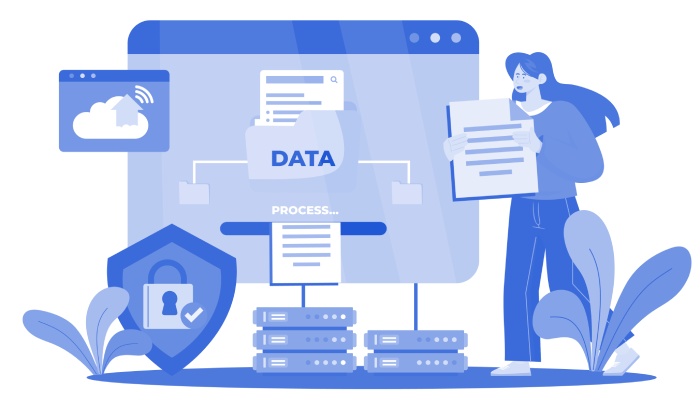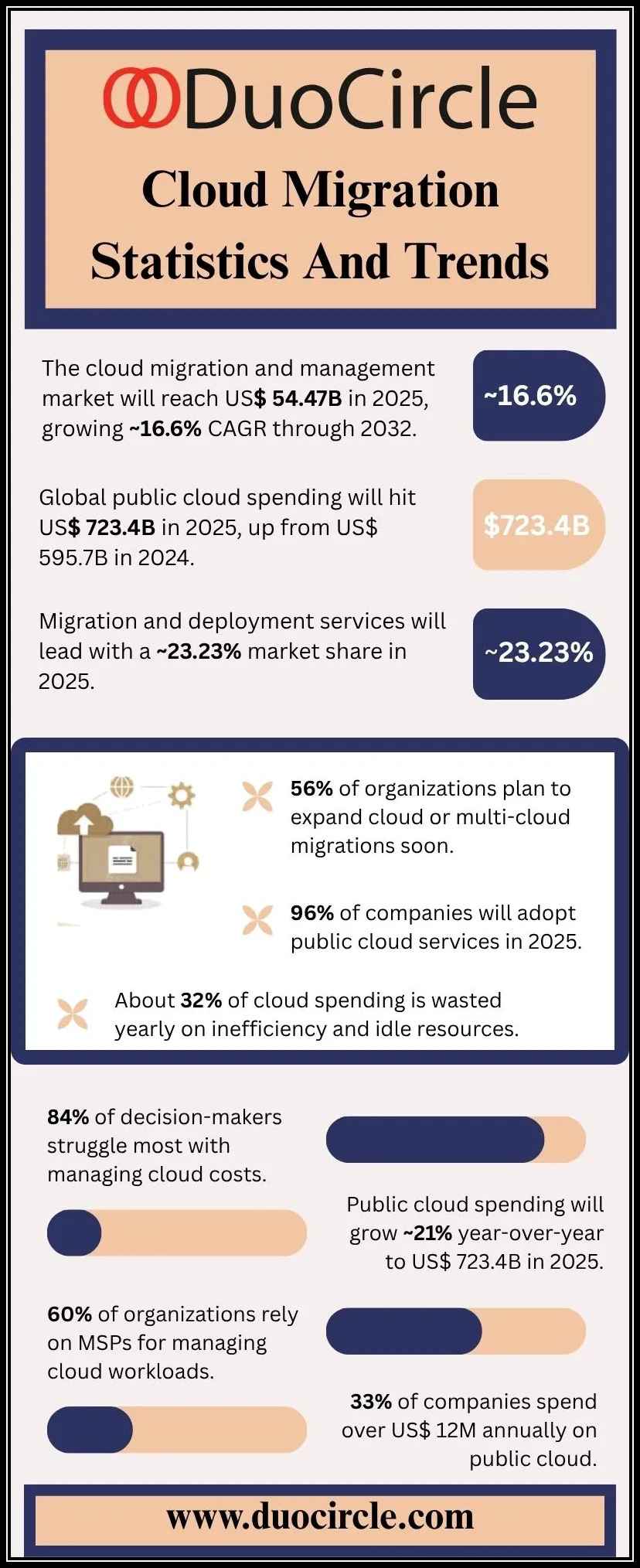Migrating to Office 365, or Microsoft 365 as it’s increasingly known, can feel like preparing for a grand adventure through the digital wilderness. You’re trading your familiar desktop-land for the vast expanse of cloud computing — a brave, sometimes bumpy journey.
I’ve been down this road more times than I care to count, witnessing everything from triumphant data transfers to hilarious email mishaps. So, buckle up as we explore what it really means to embark on an Office 365 migration, from understanding its perks to navigating the common hiccups and plotting your winning strategy.
Understanding Office 365 and Its Benefits
Before diving headlong into the migration swamp, it’s crucial to grasp what Office 365 actually delivers. It’s not just your favorite Office apps (though PowerPoint and Excel get upgraded just like fine wine). With Microsoft Azure running behind the scenes, Office 365 offers a powerful cloud infrastructure that enables seamless cloud collaboration, remote workforce enablement, and digital transformation strategies to flourish.
The magic lies in services like Exchange Online, which powers email migration and management with reliability and scalability. Then there’s OneDrive migration and SharePoint migration, enabling effortless cloud storage and document collaboration. Microsoft Teams migration further enhances real-time communication, cementing Office 365 as a full-fledged collaboration platform. To maintain continuity and capture key discussions during this transition, consider using an AI note taker for Teams to automatically record and summarize important meetings.
Taken together, the suite supports information governance, security compliance, and identity management with Active Directory synchronization, ensuring that as your data moves across cloud storage and infrastructure upgrades, data integrity and data security stay rock solid.
Common Challenges in Office 365 Migration
Now, migration isn’t always smooth sailing—even with Microsoft FastTrack’s support or industry-leading third-party migration tools like Quest Software, BitTitan, or SkyKick. Oh no, sometimes it’s more like herding cats in a thunderstorm.
Email migration, for example, can introduce data synchronization nightmares, especially in tenant-to-tenant migrations where data transfer crosses organizational boundaries. Hybrid migration setups add another layer of complexity, balancing on-premises data centers with Office 365 deployment.
Email security demands meticulous attention, or you risk phishing exposures, compromised accounts, or worse, full-scale breaches. Then there’s security automation — a powerful safeguard when implemented correctly, but a dangerous loophole if configurations are misaligned.
Email archiving and data backup strategies must dovetail perfectly with migration planning to avoid data loss and ensure compliance with industry regulations. Without diligent migration testing and post-migration support, even the best-planned projects can fall flat, leaving disgruntled users and red-faced IT teams.
Types of Office 365 Migration Approaches
Choosing the right migration approach is a bit like picking the best route on a road trip. Do you take the scenic hybrid migration highway, blending your existing infrastructure with the cloud, or hitch a ride on the tenant-to-tenant migration fast lane when consolidating organizations?
Cutover Migration
Ideal for smaller organizations, this method moves all mailboxes to Exchange Online at once. It’s quick but requires downtime and meticulous migration planning to minimize user disruption.
Staged Migration
For mid-sized enterprises, staged migration allows data transfer in batches, synchronizing existing Exchange environments with Office 365 over weeks or months. Active Directory synchronization plays a vital role here to keep user identities consistent.
Hybrid Migration
The VIP of migrations, hybrid migration, blends your on-premises Exchange with Microsoft 365 migration seamlessly. It supports mail flow coexistence and gradual migration, perfect for organizations unwilling to ‘flip the switch’ overnight.
Tenant-to-Tenant Migration
Often needed during mergers and acquisitions, tenant-to-tenant migration demands expert handling of data synchronization, migration tools, license management, and identity management to maintain security compliance.
Planning Your Office 365 Migration Strategy
If you ask me, a migration without a solid plan is like piloting a plane with no flight path — exhilarating but bone-crushingly reckless. Migration planning should begin with a migration assessment, identifying data sources, dependencies, and user requirements.
IT consulting plays a big role here. Trusted advisors from Microsoft FastTrack or reputable Redmond Channel Partners, armed with migration automation tools such as the AvePoint Migration Platform, Metalogix, or CodeTwo, can tailor strategies that save time and reduce risk.
Project management cannot be understated — coordinating tasks from user provisioning to infrastructure upgrade and migration testing. You’ll also want a service-level agreement (SLA) that clearly defines post-migration support and accountability.
Security considerations, including data backup and email archiving plans, must be woven into the fabric of your strategy to uphold data integrity. Plus, aligning cloud adoption efforts with business goals harnesses cloud computing’s full potential, transforming your digital landscape.
Once migration is complete, maintaining visibility and control across multiple cloud services becomes critical. Using a reliable cloud management tool helps organizations monitor costs, optimize workloads, and keep post-migration infrastructure efficient.
Key Features of Professional Office 365 Migration Services
Professional Office 365 migration services are more than just data movers; they’re cloud sherpas who navigate treacherous technical terrain. Here’s what I’ve learned to look for:
- End-to-End Migration Tools: Providers often leverage third-party migration tools like TransVault for email archiving, Cloudiway or SkyKick for tenant-to-tenant migration, and Quest Software or BitTitan for comprehensive data migration tasks.
- Comprehensive Data Transfer: Beyond email migration, they handle SharePoint migration, OneDrive migration, and Microsoft Teams migration to maintain collaboration platform integrity.
- Robust Security and Compliance: Data security and information governance are baked into migration workflows, ensuring adherence to industry standards which is critical when using cloud infrastructure such as Microsoft Azure.
- Active Directory Synchronization & Identity Management: Ensuring users retain access credentials and permissions through seamless identity synchronization avoids the dreaded account lockouts post-migration.
- Migration Automation & Testing: Automation reduces errors, and rigorous migration testing confirms data integrity and user readiness before going live.
- User Provisioning & License Management: Automating license assignments while onboarding users smoothly cuts down on administrative chaos.
- Post-Migration Support & Training: Services like Microsoft FastTrack and providers like AvePoint ensure the transition doesn’t end the day migration wraps — they offer ongoing support to iron out issues and empower users.
- Cloud Adoption & Digital Transformation Expertise: Beyond raw migration skills, professional services guide organizations through broader digital transformation journeys, leveraging cloud computing for competitive advantage.
- Integration with Third-Party Solutions: Many migration services provide connectors for environments integrating Google Workspace, Citrix, or VMware, smoothing multi-platform infrastructures.
In my experience, the secret sauce lies in combining sharp technical know-how with empathetic IT consulting. When the vendor understands that migration isn’t just about data transfer, but people and processes too, the result is a smooth, secure Office 365 deployment that fuels collaboration instead of chaos.
Migrating to Office 365, Microsoft’s own flagship cloud service, is certainly a climb, but with the right preparation, tools, and partners, it’s a rewarding trek worth making. Whether you’re guiding a small business via staged migration or orchestrating a massive tenant-to-tenant overhaul post-merger, professional migration services and strategic planning can save your sanity — and your data. Trust me, I’ve been there, caffeinated and ready, and the view from the cloud is spectacular.
Statistical Data: Cloud Migration Trends and Success Rates
- 70% of organizations utilize Microsoft FastTrack for migration assistance
- 60% of migrations incorporate hybrid migration models
- Data loss incidents during Office 365 migration reduced by 45% when using third-party tools (Quest Software, BitTitan)
- Average mailbox migration time reduced by 30% with migration automation
- 90% of enterprises cite post-migration support as critical for user adoption success
Data Security and Compliance Considerations During Migration
When diving headfirst into an Office 365 migration or any Microsoft 365 migration, data security isn’t just a box to tick; it’s the fortress holding your kingdom together. Trust me, I learned this the hard way during a particularly chaotic tenant-to-tenant migration. Somewhere between Active Directory synchronization and email migration, I almost lost sleep over data integrity—and not just from caffeine overdoses.
During cloud migration—whether it’s SharePoint migration, OneDrive migration, or Exchange Online transfer—ensuring data security and compliance is mission critical. Microsoft Azure plays a huge role in the background, providing the robust cloud infrastructure needed for encrypted data transfer and storage. But here’s the twist: security compliance isn’t just Microsoft‘s arena. Your organization’s posture on information governance, data backup, and email archiving must align with industry standards and legal mandates like GDPR or HIPAA. Lengthy post-migration support often involves monitoring these aspects closely.
Leveraging migration planning tools, such as those from Quest Software or BitTitan, can automate security configurations and even help maintain service-level agreements (SLAs). Third-party migration tools also come equipped with security compliance features that prevent unauthorized data exposures—a lifesaver if your IT consulting team wants to keep regulators happy during a hybrid migration or cloud adoption project.
Migrating Email, Calendars, and Contacts Efficiently
Ah, the good ol’ days when I thought email migration was as simple as hitting “copy-paste.” Spoiler alert: migrating calendars and contacts alongside emails without losing user data or causing confusion requires surgical precision. Whether you’re moving mailboxes to Exchange Online or syncing an entire Google Workspace, efficient data synchronization is the name of the game.
The key is to treat data migration as more than just moving bytes. It’s about user provisioning and identity management, ensuring the right people have seamless access post-migration. Migration tools like Metalogix and AvePoint Migration Platform offer fantastic automation features that handle email, calendar, and contact migration with minimal downtime.
If you’re managing a hybrid migration, keep in mind that Active Directory synchronization becomes your best friend here. It ensures that email and calendar permissions stay intact across different platforms, while Microsoft Teams migration ties communication channels together for a smooth transition. Don’t forget to run migration testing ahead of time; it can illuminate conflicts or errors before they disrupt business continuity.
Minimizing Downtime and Ensuring Business Continuity
Now, here’s a lesson from the trenches: nothing hampers productivity like unexpected downtime during cloud migration. Your cloud collaboration shouldn’t become a chaotic game of “Where’s My Email?” in the middle of a workday. Minimizing downtime is crucial when executing Office 365 deployment or moving workloads across cloud storage.
Planning is everything—sound migration planning coupled with a comprehensive migration assessment can identify the best windows for executing data transfer. With tools from SkyKick or CodeTwo, automation can throttle data migration flows to reduce server overload and avoid bottlenecks.
Setting up a solid data backup strategy before migration ensures that even if things take a wrong turn, you’ve got a safety net. Dell Technologies and Mimecast provide excellent solutions for email archiving and backup, ensuring data integrity. Infrastructure upgrades might be necessary to handle peak migration loads, so consider IT consulting to evaluate your environment.
And never underestimate the power of communication. Keeping your remote workforce enabled and informed during the migration fosters patience and cooperation, smoothing over inevitable hiccups in the cloud adoption journey.
Post-Migration Support and Optimization
Once the dust settles and data migration wraps up, your job isn’t over. Post-migration support is where you turn from firefighter to gardener, nurturing the cloud infrastructure for optimal health. Based on hands-on experience during various Microsoft FastTrack engagements, this phase is often overlooked—but it’s a game changer.
Post-migration support involves monitoring system performance, troubleshooting hiccups, and refining license management. Sometimes users need extra help adjusting to new tools like Microsoft Teams, OneDrive migration workflows, or remote workforce management software for keeping distributed teams organized. Plus, ongoing migration testing ensures data synchronization stays rock solid and the collaboration platform performs without glitches.
Pivoting to optimization, IT consulting comes into play again—with many recommending leveraging Cloudiway or Binary Tree to fine-tune workloads and improve efficiency across SharePoint migration and Exchange Online deployments. The end result? A fully operational, secure, and compliant cloud environment that drives your digital transformation forward.
Choosing the Right Migration Partner for Your Organization
Picking the right migration partner is like choosing a dance partner—if you pick well, the whole process flows smoothly; if not, you’re stepping on toes all night. From personal experience juggling migration projects, selecting a partner with expertise in tenant-to-tenant migration, migration automation, and cloud migration is key.
Microsoft FastTrack is a great starting place, offering trusted guidance and direct support from Microsoft. But beyond that, evaluating third-party migration tools and partners like AvePoint, Quest Software, or TransVault is essential depending on your organization’s scale and complexity. For instance, Binary Tree shines in hybrid migration scenarios, while SkyKick is hard to beat in Office 365 deployment automation.
Don’t forget to scrutinize a partner’s track record in IT consulting, project management, and post-migration support. Reading insights from influencers like Paul Thurrott or Mary Jo Foley can also point you in the right direction since they often reveal real-world experiences with migration vendors and tools. And yes, review service-level agreements carefully—sometimes the fine print determines how well your migration’s data security and service continuity hold up.
In the end, a trusted migration partner will not only execute your digital transformation with confidence but also become an ongoing ally in your cloud adoption journey.
FAQs
What are key considerations for data security during Office 365 migration?
Data security during migration involves ensuring encrypted data transfer, compliance with regulatory standards like GDPR or HIPAA, and maintaining data integrity through backup and email archiving. Using migration tools that support security configurations is critical.
How can I minimize downtime during Microsoft 365 migration?
Minimizing downtime requires thorough migration planning, using automation tools such as SkyKick or CodeTwo, scheduling migration during off-peak hours, and maintaining a comprehensive data backup strategy for quick recovery if needed.
What is the role of Active Directory synchronization in migration?
Active Directory synchronization helps maintain user provisioning and identity management across environments, ensuring users retain access to emails, calendars, and collaboration tools seamlessly during hybrid migration scenarios.
How important is post-migration support?
Post-migration support is vital to optimize system performance, resolve user issues, manage licenses, and monitor data synchronization, ensuring a smooth transition to cloud collaboration platforms like Microsoft Teams and SharePoint.
Which migration partners are recommended for Microsoft 365 migrations?
Microsoft FastTrack is a trusted Microsoft service, but third-party vendors such as Quest Software, BitTitan, AvePoint, and Binary Tree also offer specialized migration automation and consulting services that cater to various organizational needs.
Key Takeaways
- Data security and compliance must be prioritized from migration planning through post-migration support to protect data integrity and meet regulatory standards.
- Efficient email migration requires careful data synchronization, identity management, and migration testing using advanced migration tools.
- Minimizing downtime hinges on strategic scheduling, automation, and robust data backup solutions.
- Post-migration support and continuous optimization ensure smooth user adoption and system performance.
- Choosing the right migration partner—whether DuoCircle or another trusted provider—can make or break the success of your cloud migration journey.






